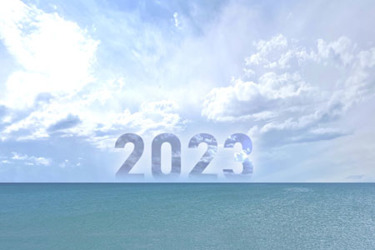Water Innovations: Positive Energy For 2023

By Kevin Westerling,
@KevinOnWater

The past few years have been especially difficult for everyone, water and wastewater professionals included, with no shortage of turmoil and obstacles. There is some momentum for positive change, however, with innovative solutions at the heart of recovery, advancement, and ultimate prosperity.
Every new year is a time of optimism, promising that next year will be better than the last. And while 2022 improved upon its predecessor — we did seem to turn the corner on COVID — another widespread and pervasive problem emerged. It was The Year of Inflation, which is not as existentially threatening as COVID but perhaps equally pernicious, affecting nearly all aspects of life and causing hardship for individuals, families, communities, and nations, as well as many businesses (while others managed to benefit) and, yes, water and wastewater utilities.
Inflation is notoriously difficult to tame, and far from the only challenge that utilities will continue to face throughout 2023, but optimism still reigns supreme around this time. “This will be our year” is the common refrain. And why not? Every challenge offers opportunity — to innovate, to be more efficient, to rise above and become better for it.
The “Top 10 Trends for 2023” edition of Water Innovations invites you to seize the opportunity, offering ideas and solutions for surviving this moment and thriving well into the future.
Several topics covered have been trending for some time, but they are no less significant as we turn the page to a new year. In fact, when it comes to replacing lead service lines, addressed with “A 2023 Road Map To Replacing The Nation’s Toxic Lead Pipes,” we are at the apex of concern. As author Maureen Cunningham of the Environmental Policy Innovation Center notes, we must “match the pace of lead pipe replacement with the urgency of the problem.”
PFAS — the catch-all term for per- and polyfluoroalkyl substances — has been the other contaminant to dominate water headlines in recent times, prompting many states and the federal government to fast-track action plans. But whereas the news in previous years initially focused on its discovery, prevalence, and potential impact, and then on rule making, we have now uncovered enough solutions to fight back and make “forever chemical” a misnomer (see: “Leachate — A Key To Unlocking The Chain Of Recirculating PFAS Forever?”).
Unfortunately, trends often correlate with threats, due to the nature of water stewardship — the top priorities of which are to ensure safe and available water. Therefore, we must also pay heed to cybersecurity (“Additional Technology To Help Thwart Cyberattacks”), source water contamination (“Regulating Farm Pollution To Reduce Harmful Algal Blooms”), climate change impacts (“Benchmarking As A Tool To Optimize Operations And Lower GHG Emissions”), and sustainability (“Adopting A ‘One Water’ Approach In Florida Through Integrated Master Planning”).
But it’s not all doom and gloom. As previously stated, the new year is a time for optimism, and we’re proud to cover advancements driven by innovation (“Water Systems Get Smart With Digitalization” and “Doing More With Less: Densified Activated Sludge Systems For Water Resource Recovery Facilities”) as well as service to the community and environment (“Customer Engagement And Water Infrastructure Projects: How To Achieve Success” and “Industry 5.0: What It Means For Industry And Water Management”).
It doesn’t hurt that many of these solutions will also help to curtail the effects of inflation by bringing more efficient processes to bear — because, while inflation was 2022’s big issue, we fool ourselves to be taken in by unbridled optimism and the notion of a clean slate for the new year. In 2023, we will continue to battle many of the same challenges with which we have become achingly familiar, and perhaps some new, unexpected ones as well. The larger challenge for the industry is to combat them with care, courage, and commitment to the cause — safeguarding the world’s most important resource.
